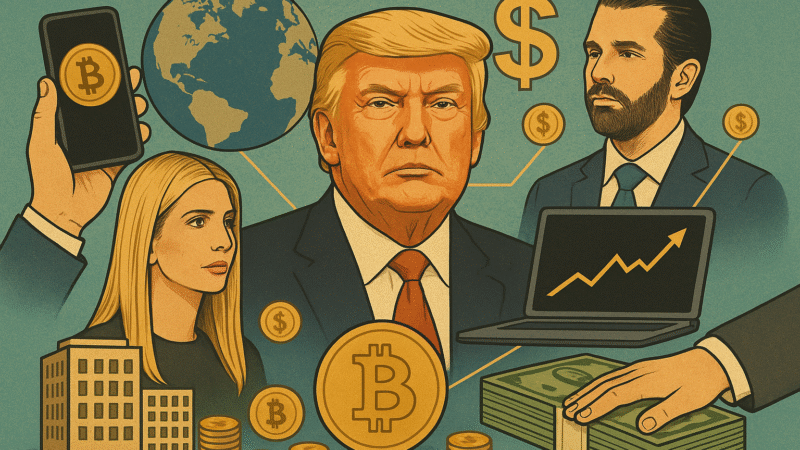Solana Whale Moves $106 Million In SOL During Market Rally: What It Means For The Crypto Market?
Introduction
In a market that has recently regained bullish momentum, a massive transaction involving $106 million worth of Solana (SOL) has stirred fresh speculation about whale movements and institutional interest. The transfer, which occurred on June 4, 2025, was recorded on-chain and involved more than 630,000 SOL tokens, drawing the attention of crypto analysts, investors, and on-chain tracking platforms.
The movement has coincided with a broader rally in the cryptocurrency market, where Bitcoin, Ethereum, and other altcoins have been recovering from Q1 slumps. However, this specific Solana whale transfer stands out not just for its size but for the timing, execution, and potential implications.
The Transaction Breakdown: What Happened?
According to on-chain analytics sourced from TokenPost, the transaction was initiated from a private wallet address to an unidentified institutional-grade custody service. While the sender’s wallet has a history of holding significant amounts of SOL, this particular transaction is the largest movement from that wallet since early 2023.
Observers noted that the funds did not move to a known exchange, which typically would indicate a sell-off. Instead, the tokens were directed to what is suspected to be a cold storage address or an OTC (over-the-counter) holding structure, which implies long-term strategic repositioning rather than immediate liquidation.
This type of behavior suggests two likely scenarios:
An institutional investor is restructuring their holdings into custody solutions, possibly in preparation for offering SOL-backed products.
The whale is preparing for governance-related activities or staking, aligning with broader ecosystem participation strategies.
Whale Behavior In Crypto: Why It Matters?
In crypto markets, “whales” refer to holders with disproportionately large amounts of a given asset, often capable of influencing short-term price movements and signaling broader trends. Their actions are closely monitored because they can provide insights into market sentiment, liquidity positioning, and institutional interest.
A $106 million transfer, especially under non-selloff conditions, could reflect:
Strategic positioning ahead of expected price appreciation.
Confidence in Solana’s roadmap and long-term viability.
Preparation for ecosystem involvement, such as staking or governance participation.
Whale movements are often early indicators of trend shifts. In traditional markets, large institutional rebalancing or fund inflows are similarly used by analysts to project momentum. In crypto, with less transparency and regulation, on-chain data becomes the key to interpreting such signals.
Solana’s 2025 Performance: A Quick Recap
The Solana ecosystem has rebounded impressively in 2025 after a turbulent 2022 and mixed developments in 2023–2024. Key factors that have supported its recent rise include:
High-throughput scaling advancements: Continued improvements to its Proof-of-History (PoH) consensus and validator efficiency.
Adoption of Solana for memecoins and NFT activity, rivaling Ethereum Layer 2 chains in throughput.
Major partnerships, including integrations with TradFi institutions, Web3 gaming platforms, and payment systems.
Regulatory clarity in the U.S. and EU markets, giving institutional investors more comfort in entering the SOL market.
As of early June 2025, SOL has risen nearly 45% YTD, outperforming most Layer 1 competitors, including Avalanche and Cardano. The recent whale transaction comes at a time when Solana’s TVL (Total Value Locked) has climbed back above $10 billion, signaling a renewed DeFi interest.
Institutional Interest In Solana Grows
Institutional investors have historically shown more interest in Ethereum and Bitcoin, but Solana has increasingly caught their attention due to:
Lower transaction fees and faster settlement times.
Growing ecosystem for Web3 and DeFi apps.
Support from major exchanges and custodians for staking and wallet services.
Prominent VC backing from firms like a16z, Polychain, and Jump Crypto.
The $106M movement might be an institutional player consolidating SOL holdings before launching structured products such as ETFs, staking funds, or yield-generating products. The move could also precede Solana’s inclusion in more index-tracked portfolios, especially as the market matures and looks beyond Ethereum for diversification.
How The Market Reacted?
Interestingly, despite the sheer size of the transaction, SOL’s price remained relatively stable, trading within a narrow band between $158–$162 following the news. This points to strong market absorption capacity and reduced panic selling — a stark contrast from previous years where large whale movements often triggered sharp volatility.
Technical analysis indicates:
Support at $157 remains firm.
Resistance at $165 is the next key level to break.
Volume surged by 18% in the 24 hours following the transfer, suggesting renewed market engagement rather than fear.
Traders interpret this behavior as a bullish sign, with some suggesting the whale transfer could be the catalyst for the next leg up in SOL’s price trajectory, particularly if followed by a breakout of the $165 resistance zone.
The Role Of Whales In Solana’s Governance
Solana has an increasingly active governance structure, and large token holders often have outsized influence. While the governance participation rate has historically lagged compared to smaller DeFi chains, efforts to improve transparency and engagement have accelerated in 2025.
If the whale is preparing for deeper ecosystem involvement, such as voting on upcoming protocol upgrades, staking mechanisms, or fee structure revisions, this move could reflect a more engaged class of institutional participants entering Solana’s inner circles.
Broader Implications For The Crypto Market
The Solana whale transaction does not occur in isolation. It must be viewed against the backdrop of:
Rising institutional inflows across the crypto asset class.
Renewed interest in altcoins as Bitcoin dominance dips slightly.
Increased media coverage and investor education about blockchain scalability.
Whale behavior on Solana may set a precedent or influence strategies in competing Layer 1 ecosystems, particularly Avalanche, Near, and Sui, all of which are aggressively targeting developer mindshare and liquidity migration.
Moreover, if this trend of non-exchange, custodial whale transfers continues, it may suggest a longer-term investment horizon is becoming more common among high-net-worth participants — a sign of crypto market maturity.
Conclusion
The $106 million Solana whale transaction is more than a headline—it’s a signal. While definitive conclusions about the whale’s intent remain speculative, the indicators lean toward a strategic, institutional-level repositioning rather than a sell-off or exit.
As Solana continues to solidify its position among top Layer 1s, such moves could become more frequent, shaping price dynamics, governance influence, and investor sentiment. For now, the move adds one more reason for analysts and investors to keep their eyes on SOL — not just as a trading asset but as a maturing ecosystem with increasing institutional credibility.



